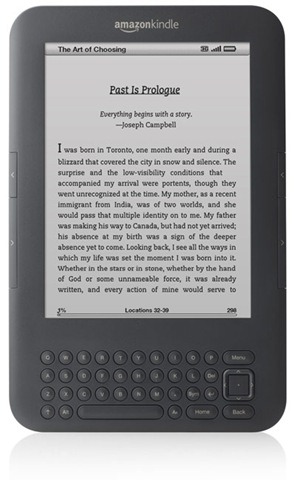 E-readers have been doing pretty well lately. The Bookseller reports that the e-reader market in the UK doubled over Christmas, showing that 7% of British adults received a new e-reader during that time, bringing the total percentage of e-reader adoption by adults to 13%. The Kindle and iPad were the fastest-growing devices, but 19% of e-book downloaders say they use iPhones to read digital content, and 13% say it is the device they use most often.
E-readers have been doing pretty well lately. The Bookseller reports that the e-reader market in the UK doubled over Christmas, showing that 7% of British adults received a new e-reader during that time, bringing the total percentage of e-reader adoption by adults to 13%. The Kindle and iPad were the fastest-growing devices, but 19% of e-book downloaders say they use iPhones to read digital content, and 13% say it is the device they use most often.
Perhaps most interestingly for the UK publishing industry, 61% of the people who got e-readers for Christmas had downloaded a paid-for e-book, and the average new owner bought 5.9 e-books. This suggests that 10 million e-books could have been sold in the UK since Christmas—compared to 18.6 million print sales. That’s a lot larger chunk than the 5% of the market e-books have been said to occupy, but the level of sales will probably decline and average out over the rest of the year as some new owners decide e-books are not for them.
On a larger scale, market research firm Yankee Group expects global e-reader device sales to grow from $1.9 billion and 11 million unit sales in 2010 to $8.2 billion and nearly 72 million units in 2014, with the total worldwide installed base of e-readers doubling each year—12 million in 2010; 127 million in 2014
Furthermore, the firm suggests the average price of e-readers will drop from $182 in 2010 to $114 by 2014.
Of course, analysts’ guesses are often not worth the electrons they’re printed on. Still, whether the specific figures are accurate or not, it was already pretty obvious that e-reader sales are set to grow explosively over the next few years, so these predictions are not exactly a big surprise.































